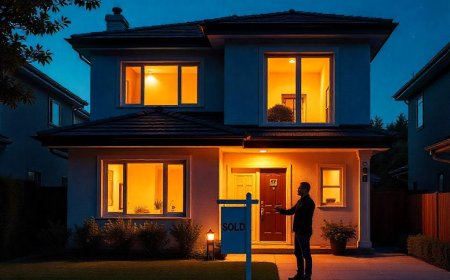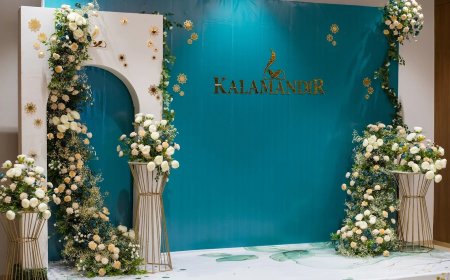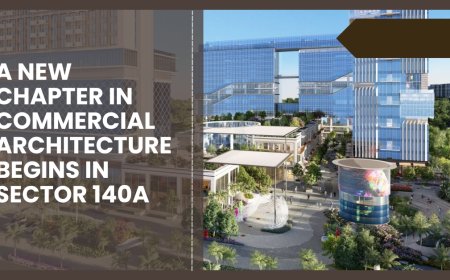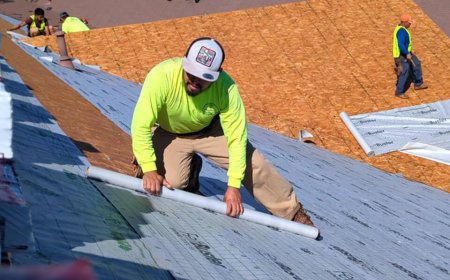How to successfully transition from shared housing to independent properties for rent!
Discover a wide range of affordable properties for rent in top locations. Find your perfect home with great amenities and flexible rental options.

Finding the right Properties for Rent represents a major achievement for anyone ready to leave shared housing behind. This exciting move offers the chance to create a space that truly reflects your lifestyle and preferences. Careful budgeting, understanding your priorities, and researching different neighborhoods can make all the difference in securing a home that suits both your needs and your finances. Taking the time to visit potential places and ask the right questions will also help ensure you make a well-informed choice. Exploring lease terms, understanding tenant rights, and reviewing contracts thoroughly are additional steps that can protect you from future complications. A bit of extra effort at this stage often leads to long-term satisfaction with your new living arrangement.
Embracing this new chapter comes with added responsibilities, from managing utility bills to handling maintenance tasks. Creating a checklist and setting clear goals can ease the transition and prevent unnecessary stress. Its also helpful to set up a savings buffer for unexpected costs, such as repairs or furnishing needs. Building a positive relationship with your landlord or property manager can contribute to a smoother rental experience. With thoughtful planning and a proactive approach, stepping into your own space becomes not only a personal milestone but also a rewarding and empowering experience that lays the foundation for future independence.
Evaluate Your Financial Readiness Before Committing to Your First Independent Home
One of the most critical steps when leaving shared housing is assessing your financial situation. Without roommates to share the burden, youll be responsible for the full cost of rent, utilities, internet, and other living expenses. Take time to create a detailed budget that includes not only rent but also deposits, furnishing costs, and monthly bills. This will give you a clear understanding of what you can afford and help you choose a property that matches your income without causing financial stress.
Understand Your Priorities and Non-Negotiables When Searching for Your Ideal Space
The shift from shared accommodation offers the opportunity to tailor your living environment to your personal tastes and needs. Before you begin viewing potential homes, make a list of features that are important to you. Consider factors such as proximity to work or school, access to public transport, safety of the neighborhood, and amenities like laundry facilities or parking. Knowing what matters most will save time and help you focus on options that truly fit your lifestyle.
Master the Application Process and Build a Strong Rental Profile for Success
Transitioning into your own place often means competing with other renters. To stand out, ensure your rental application is complete and professional. Prepare documents such as proof of income, references from previous landlords or housemates, and identification in advance. A positive rental history and stable employment can boost your chances of securing the home you want. Dont hesitate to write a brief cover letter to introduce yourself to potential landlords, showcasing your reliability and enthusiasm.
The effect of local development projects on future prices of properties for rent
The introduction of new business districts, technology parks, or shopping centers within a locality can have a profound effect on nearby housing markets. These projects generate employment opportunities and attract professionals seeking convenience and reduced commute times. As the population of working individuals in an area grows, so does competition for available housing. This increased demand frequently translates into higher rental values, especially when supply struggles to keep pace with the influx of new residents. The proximity to vibrant economic centers is often a key factor that accelerates this upward pricing trend.
Community Redevelopment Plans and Their Long-Term Impact on the Affordability of Urban Housing Options
Urban renewal programs that focus on revitalizing older or neglected neighborhoods can significantly alter the housing landscape. Initiatives such as restoring historical buildings, enhancing green spaces, or introducing mixed-use developments contribute to a renewed sense of community pride and attractiveness. While these changes can greatly improve quality of life, they often come with a trade-off: the steady escalation of accommodation costs. As areas once considered undesirable transform into sought-after locations, long-term residents may find it increasingly challenging to secure affordable living arrangements within their familiar surroundings.
Top reasons why properties for lease are a smart choice for modern renters
In todays fast-changing world, Properties for Lease provide an ideal option for those who prioritize flexibility over long-term ownership. With career paths, lifestyle goals, and personal circumstances evolving rapidly, renting makes it easy to relocate without the stress of selling a property. This arrangement empowers individuals to embrace new opportunities and experiences while maintaining a sense of security and ease. Renting supports a lifestyle that values adaptability, allowing people to choose homes that suit their current needs without being locked into one place for years. Its a smart solution for anyone wanting to explore different cities, neighborhoods, or even countries.
Modern renters appreciate the ability to adjust their living situation as life changes. From growing families to exciting job offers in new locations, leasing offers the freedom to move without the financial strain of ownership transitions. This flexibility not only reduces stress but also opens doors to new possibilities. Whether seeking vibrant urban living or a quieter suburban setting, renters can easily align their housing choices with their goals and aspirations.
Lower upfront costs and reduced financial responsibilities make renting more attainable
One of the most compelling reasons modern renters choose leasing over ownership is the significantly lower upfront investment. With no need for a hefty down payment, property taxes, or costly maintenance expenses, renters can allocate their resources toward other priorities such as travel, education, or starting a business. Additionally, renting often includes services like repairs and upkeep, which saves time, effort, and unexpected expenses all of which contribute to a stress-free living experience.
Access to premium amenities and prime locations without the ownership price tag
Many rental properties are situated in desirable neighborhoods and come with amenities that might be out of reach for the average homebuyer. From fitness centers and rooftop lounges to swimming pools and concierge services, renters can enjoy a lifestyle that combines luxury and convenience. This accessibility allows individuals and families to benefit from high-end features and central locations while avoiding the long-term financial obligations tied to ownership.
Opportunity to explore different living environments before settling down
Renting provides a valuable chance to experience various types of homes and communities. Whether someone is deciding between an urban apartment, a suburban townhouse, or a countryside cottage, renting allows them to try out different living environments before committing to one permanently. This exploration helps renters identify what suits their lifestyle best, ensuring a more confident and informed decision when or if they decide to buy in the future.
Green living: eco-friendly properties for lease on the market today
In recent years, there has been a significant shift in how renters choose their next home, with sustainability becoming a top priority. Eco-conscious individuals are increasingly drawn to residences designed with the environment in mind from energy-efficient appliances to solar-powered systems. This growing demand has encouraged developers and landlords to invest in green building practices, ensuring that renters have access to homes that minimize environmental impact while offering modern comforts. As a result, the rental landscape is rapidly evolving to accommodate this new wave of environmentally responsible living.
How eco-friendly building materials and designs are shaping modern rental homes
One of the most noticeable trends in the housing sector is the incorporation of eco-friendly materials and innovative designs in rental accommodations. Many of these homes feature bamboo flooring, reclaimed wood, recycled steel, and low-VOC paints, all contributing to healthier indoor environments. Architectural choices, such as larger windows for natural lighting and advanced insulation systems, further reduce energy consumption. These thoughtful designs not only support the planet but also provide tenants with long-term savings on utility bills a win-win situation for both residents and the environment.





























